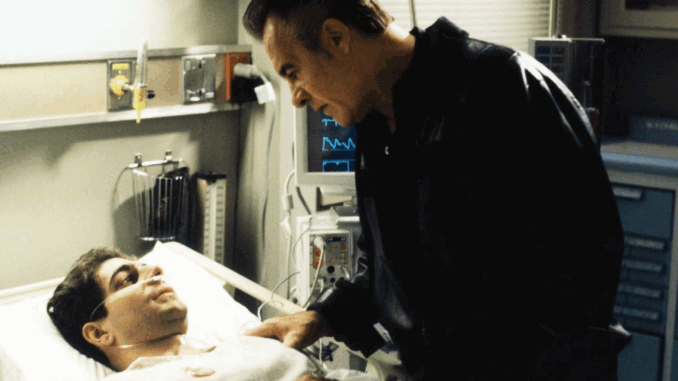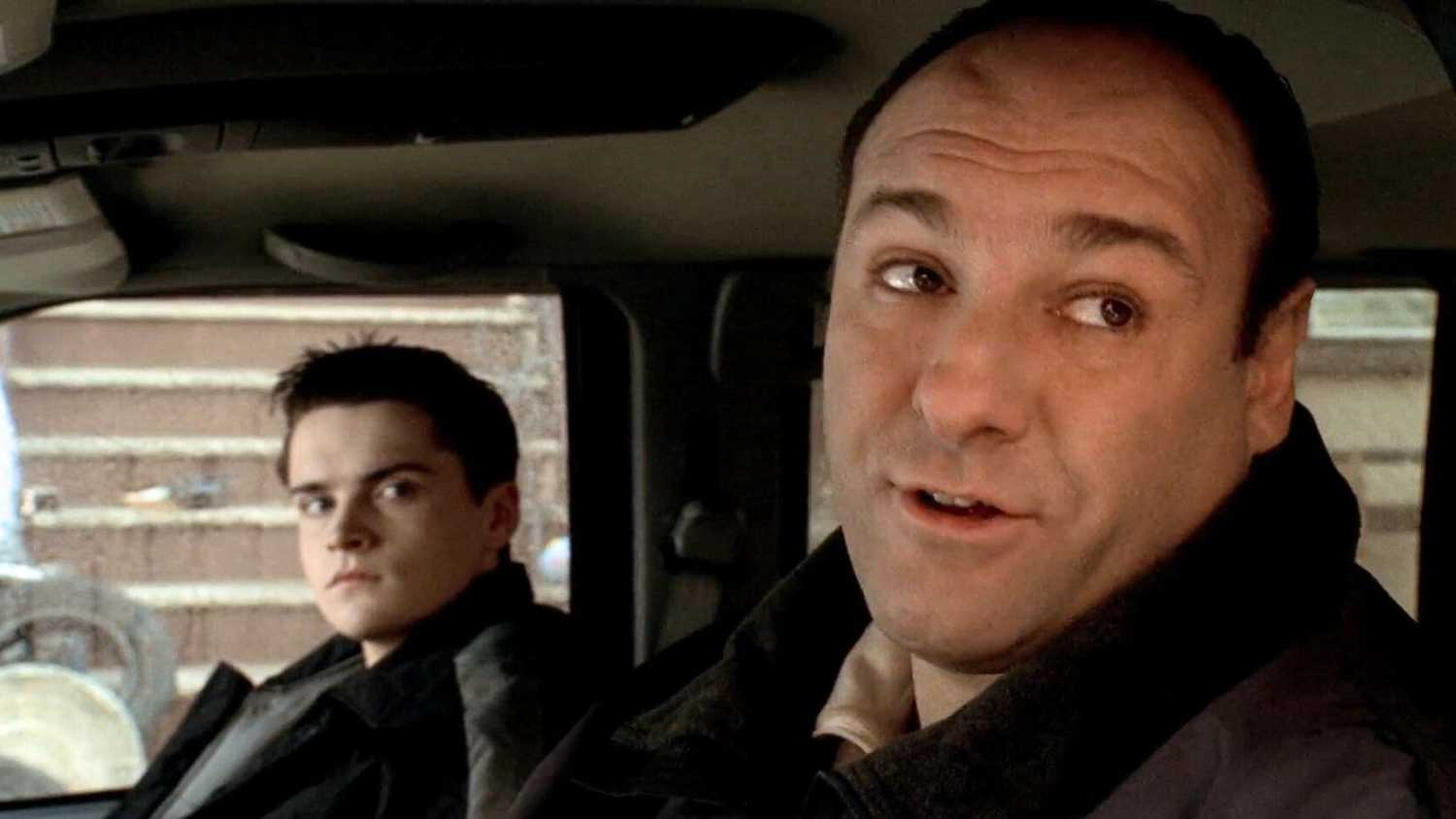
Decades since its final episode, The Sopranos’ cultural staying power hasn’t waned. If anything, the groundbreaking HBO crime drama has attained a strong legacy in the years since countless prestige shows have tried to emulate its formula and artistic ambition. Despite all the fellow dramas that imitated its prestigious scope, David Chase’s series outlasts them all. When people aren’t re-visiting The Sopranos, they are desperately attempting to unlock the cryptic and shocking mystery of the controversial finale that temporarily had America convinced their cable shut off at the most inopportune time. Much to Chase’s chagrin, the reticent showrunner who can’t elude the onslaught of questions regarding Tony Soprano’s (James Gandolfini) fate in the press, people still prefer closure to ambiguity. Fans hungry for an answer have probably missed a crucial piece of foreshadowing in Season 2 regarding death and an allusion to the number 3.
Searching For Clues That Solve the Mystery of ‘The Sopranos’ Ending
The primal days of social media were not prepared for the level of outrage inspired by the final minutes of “Made in America,” the 2007 series finale of The Sopranos. With the new threats of criminal prosecution facing Tony, and the general disarray of his personal and professional life, character arcs were far from complete. The tranquility of the Soprano family, as they chow down on onion rings at Holsten’s, is ephemeral, and the already bleak final season will only go downhill from here. David Chase, an iconoclast deadset on breaking television out of its formulaic habits, disrupted all expectations by cutting to black. Time has been kind to this audacious ending and its metatextual meaning, with the ending representing a metaphorical “whacking” of the audience. On that night in 2007, viewers showed little interest in the “why?” and the “how?”, but instead the “who?” and the “what?”
Across seven seasons, The Sopranos dealt with mortality head-on. After all, it is a series about organized crime, so everyone is aware that the characters are certain to meet a sudden demise. As the show wound down, Chase and his writers were quick to sprinkle in clues that pertained to Tony’s fate as the morally gray and psychologically troubled mob boss. In the final season’s premiere episode, “Soprano Home Movies,” Bobby Bacala (Steve Schirripa) posits that “you probably don’t even hear it when it happens,” referring to the abruptness of death. When Silvio Dante (Steven Van Zandt) witnesses the assassination of a New York mobster at his table, the sound cuts out, further validating Bobby’s theory. While The Godfather used oranges to represent impending death, fatalistic occurrences in The Sopranos often sees characters cooking eggs or consuming breakfast.

Christopher’s Dream in a Season 2 Episode of ‘The Sopranos’ Foreshadows the Ending
“From Where to Eternity” in Season 2 was a major revelation for the series, as Christopher Moltisanti’s (Michael Imperioli) flirtations with the afterlife in the hospital following his assassination attempt was a precursor to the frequent existential ruminations that Chase would force viewers to engage with for entire episodes in later seasons. Healing from the gunshot wounds, Christopher recalls a nightmare he experienced with Tony and Paulie (Tony Sirico). While in Hell, he sees the spirits of two slain characters from Season 1, his friend, Brendan Filone (Anthony DeSando), and Brendan’s killer, former boss Mikey Palmice (Al Sapienza), killed by Christopher and Paulie. Heavily medicated on morphine in the real world, Christopher says Mikey had a message to send Tony and Paulie: “Three O’Clock.” Bewildered by his testimony, Christopher changes the subject before there is any time to dissect its thematic importance.
After the shocking series finale, Sopranos fans, like detectives following a crime, did extensive digging across 86 episodes of television into everything that could indicate what the cut-to-black meant for Tony’s fate. While Tony and Paulie were left speechless by Christopher’s dream in “From Where to Eternity,” an episode written by Imperioli, fans could now use this ominous statement as evidence that the abrupt ending confirms Tony’s murder. Of all the background characters inside Holsten’s in “Made in America,” a scene studied as much as the Zapruder Film, the man in the Members Only jacket has become the primary suspect for his suspicious demeanor and trip to the bathroom, theorizing that he is channeling Michael Corleone of The Godfather by retrieving a gun inside a restroom stall. When the Members Only man passes by the Soprano table on his way back from the bathroom, he is at Tony’s “three o’clock,” meaning, in military parlance, exactly to his right. If we dignify Christopher’s near-death experience, “three o’clock” is the position where death comes for us.
Other Instances of the Number 3 in ‘The Sopranos’
The number three makes a handful of appearances throughout The Sopranos, but whether they are explicitly foreshadowing Tony’s demise or merely incidental will forever be up for debate. Tony’s appointments with Dr. Melfi (Lorraine Bracco) are routinely held at 3:00 in the afternoon. In the Season 3 episode, “Another Toothpick,” a superstitious Uncle Junior (Dominic Chianese) is disturbed by attending two consecutive funerals of closed ones and remarks that “these things come in threes,” tying these recent deaths to Jackie Aprile’s (Michael Rispoli) bout with cancer. To further thicken the plot, in “Made in America,” three onion rings are shared between Tony, Carmela (Edie Falco), and A.J. (Robert Iler).
Considering that The Sopranos is one of the most meticulously crafted and written shows in history, the iconography of “three” being coincidental is hard to accept. On the Talking Sopranos podcast, featuring Michael Imperioli and Steve Schirripa, the former revealed the “three o’clock” dream was based on a visit he had with a middle-aged female spirit while staying at the Chelsea Hotel in New York, infamous for its supernatural encounters, where the ghost told him that 3:00 AM is when ghosts visit the living. Imperioli has no further insight as to why Chase continued infusing three o’clock into the show.
Does this provide definitive clarity surrounding the ending of The Sopranos? Of course not — that day will never come, but for people who appreciate what David Chase was trying to say about mortality and the precariousness of life with that notorious cut-to-black, closure is superfluous. Chase, who loved to challenge his audience with prolonged dream sequences and deepening the moral decay of his characters, could feasibly be toying with viewers by leading them down a rabbit hole of bonkers theories regarding three o’clock and its fatal implications. The showrunner has expressed frustration with the press and fans for refusing to engage with the abstract nature of the ending and demanding answers. “Did Tony die?” is the question that will follow Chase forever, but at least it motivates the forever-hungry viewers of The Sopranos to keep analyzing every line of dialogue upon every rewatch.
You can rewatch The Sopranos on Max in the U.S.
